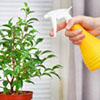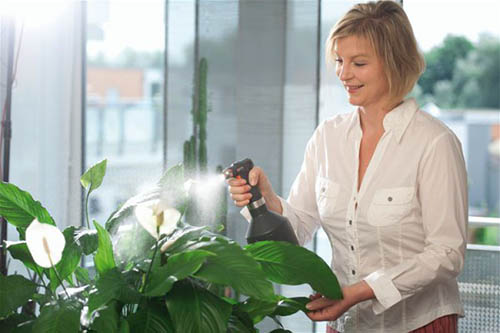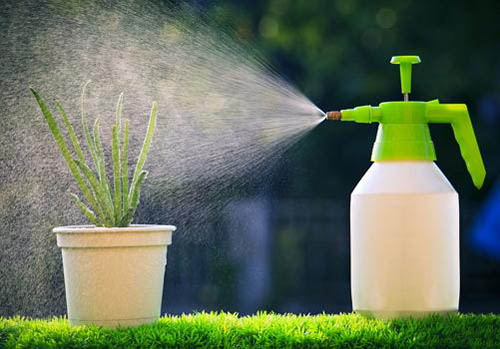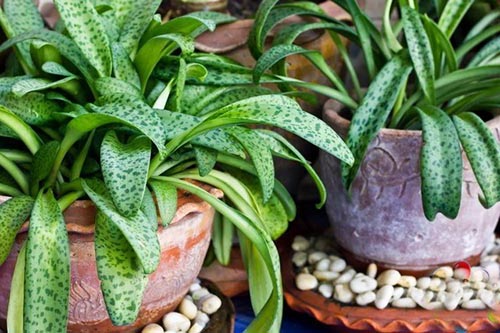How to Spray Indoor Plants Properly?

Is spraying indoor plants helpful? It's an easy question to answer. But first, let's understand why we spray them.
Why do we spray indoor plants?
Spraying is useful for these reasons:
- To add moisture to the air.
- To clean the plants.
- To water, fertilize, and protect against pests and diseases.

Most indoor plants come from the tropics and like humid air. Spraying helps by evaporating water and increasing humidity. It should be done regularly.
Dust collects on plant leaves, disrupting their natural processes. To clean them, give your plants a gentle shower with clean water.
How to spray indoor plants?
Some plants, like epiphytes, absorb water better through spraying. If plants have pests or diseases, spraying with special substances may be necessary.
Can all indoor plants be sprayed?
Not all plants should be sprayed. Fuzzy leaves and cacti, for example, shouldn't be sprayed.
These ideas are based on myths. Indoor plants come from various environments, including tropical forests and deserts. Rainfall happens there too, so spraying isn't harmful.

What shouldn't you do when spraying?
- Don't spray in direct sunlight; it can burn leaves.
- Avoid using hard or mineral water; it can harm plants.
- Don't leave wet plants in cold, humid rooms; it can cause diseases.
In other cases, understand why you're spraying. If humidity is low, consider using an air humidifier or misting the area around the plant instead of the plant itself.

Some tips for spraying indoor plants
Use a simple sprayer, especially if you have many plants. A smaller capacity is better, as it uses less water. If adding fertilizers, use them all at once.
Clean plants from dust monthly with a gentle water spray. Adjust the spray for higher water flow. Afterward, move plants to a warm, dry place.
When treating plants for diseases or pests, various methods work, but wearing gloves is essential.





